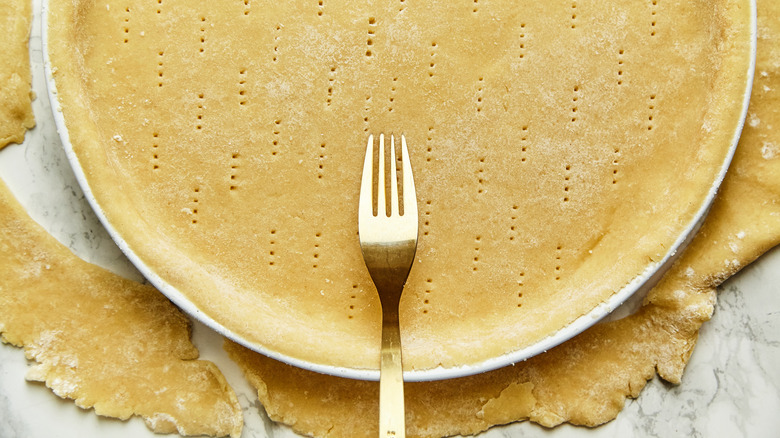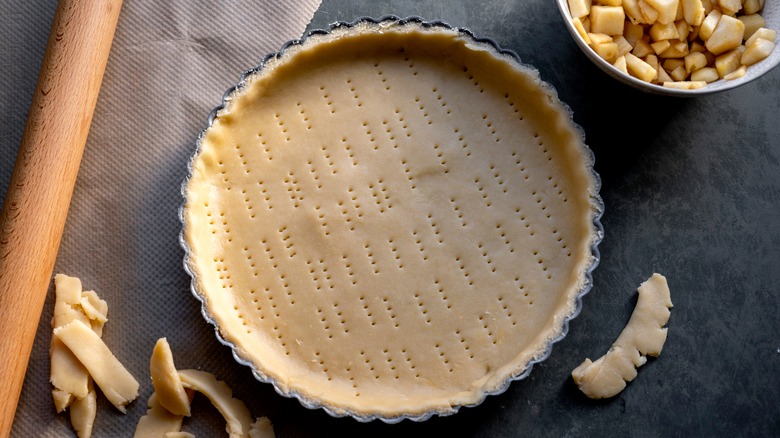What Does Poking Holes In The Bottom Of Pie Crust Actually Do?
The difference between a good pie and a great pie? It all comes down to the quality of the crust. The filling may be the perfect consistency and the ideal level of sweetness, but if the crust is dry and crumbly, the pie just won't be as tasty.
In order to achieve a buttery, flaky pie crust from scratch, there are certain steps you simply must follow. You have to use cold butter rather than softened butter, avoid overworking the dough, and make sure to mix in a splash of vinegar.
Buying the store bought kind is an easy way to bypass any potential mishaps, but there's one rule that's important whether you're working with pre-made or homemade pie dough: Poking holes in the bottom of the crust. According to The Spruce Eats, this is also known as docking. All you have to do is take a fork and lightly puncture the surface of the crust before baking — and it's supposed to make your pie better. Most people know to do this, but what they may not know is what it actually does.
Poking holes allows steam to escape
If you've ever forgotten to poke the bottom of the crust, you may have noticed that your pie came out looking uneven. The reason for this, as The Spruce Eats explains, is that unless you create a place for the steam to escape, it'll get trapped within the dough. As a result, the crust will puff up and cause your pie to warp from the bottom. Air bubbles can also lead to cracks, and cracks inevitably lead to leaks. Therefore, for a level, leak-proof crust, a perforated crust is key.
If, however, the recipe you're working with has a particularly liquidy filling, poking the bottom isn't a necessary step. In fact, according to The Kitchn, it can easily result in a soggy crust. To prevent pockets of air from forming in this case, you'll want to pre-bake the crust with pie weights instead. But if it's not a quiche or any other pie that starts out watery, a fork is really all you need.

